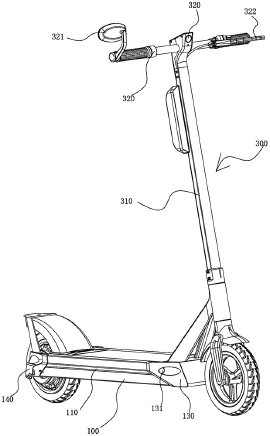Two-wheeled electric scooter molding process
Two-wheeled electric scooter molding process
Detailed explanation of two-wheeled electric scooter molding process
Introduction
With the rapid development of urban transportation, electric scooters, as a convenient and environmentally friendly means of transportation, have gradually become a popular choice for people to travel. Two-wheeled electric scooters are especially popular among young consumers for their lightness and flexibility. However, the molding process of this product is not simple, involving multiple links such as material selection, structural design, and assembly process. This article will explore the molding process of two-wheeled electric scooters in depth to help readers understand the manufacturing process behind it.

1. Structure and material selection of electric scooters
The structure of electric scooters mainly includes frames, wheels, motors, batteries, control systems, transmission systems, braking systems and other parts. The material selection of each part directly affects the performance and service life of the product.
Frame material
The frame is the core structure of the electric scooter, usually made of high-strength aluminum alloy or carbon fiber composite materials. These materials are lightweight and high-strength, which can ensure the stability and durability of the scooter.
The aluminum alloy frame is formed by injection molding or compression molding to ensure the precision and consistency of the structure.
Wheels and suspension system
The wheels are usually made of polyurethane material, which has good wear resistance and shock absorption performance.
The design of the suspension system can further improve the comfort of the scooter, especially on uneven roads.
Motor and battery
The motor is mostly a brushless motor, installed inside the wheel, which can achieve efficient energy conversion.
The battery is usually a lithium battery pack with good charging and discharging performance and safety.
Control system
The control system includes a controller, a sensor and an electric adjustment module to adjust the motor speed and respond to the driver's operation.
2. The molding process of electric scooters
The molding process of electric scooters involves multiple links, from design to final assembly, each step requires precise process support.
Frame molding
The molding process of the frame usually includes cutting, welding, grinding and other steps. In modern technology, visual matching systems and buffer fitting systems are widely used in the processing of frames to ensure the flatness and precision of the frames.
The surface of the frame is polished with a roller-driven grinding belt to remove burrs and improve surface quality.
Motor and battery installation
The motor is fixed to the frame by screws and connected to the battery pack. The battery pack is usually installed at the bottom of the frame to keep the center of gravity of the scooter balanced.
Control system assembly
The installation of controllers and sensors requires precise electrical connections. Through PCB design and welding process, the stability and reliability of the control system are ensured.
Wheel and suspension system assembly
The wheels are connected to the frame through bearings to ensure flexible rotation. The design of the suspension system can further improve the shock absorption performance of the scooter.
Final assembly and inspection
After the assembly is completed, the scooter needs to undergo a comprehensive inspection, including tests of the electrical system, mechanical structure and functional performance.
3. Assembly line production of electric scooters
Assembly line production is the key to the large-scale manufacturing of electric scooters. Through standardized and automated operating processes, rapid assembly from parts to finished products can be achieved.
Assembly line design
Each workstation is responsible for specific assembly tasks, such as motor installation, battery fixing, control system assembly, etc.
The application of automated equipment reduces manpower requirements and improves production efficiency.
Quality control
The quality inspection points on the assembly line can detect and correct problems in time to ensure the performance of the whole vehicle.
Intelligent production
With technological advances, the assembly line of electric scooters is becoming more intelligent, further improving production capacity and reducing costs.

4. Innovation and future development of electric scooters
Material innovation
The application of new composite materials will further improve the lightweight and strength of scooters.
The use of environmentally friendly materials will also become a trend of future development.
Intelligent design
The control system of electric scooters will be more intelligent, supporting functions such as voice control and GPS positioning.
User experience optimization
The comfort and safety of scooters are improved by optimizing the suspension system and braking system.
Conclusion
The molding process of two-wheeled electric scooters is a complex and delicate technology involving multiple links such as material selection, structural design, and assembly process. Through continuous technological innovation and process optimization, the performance and user experience of electric scooters will be further improved. In the future, with the application of intelligent and environmentally friendly materials, electric scooters are expected to become an important part of urban transportation.














